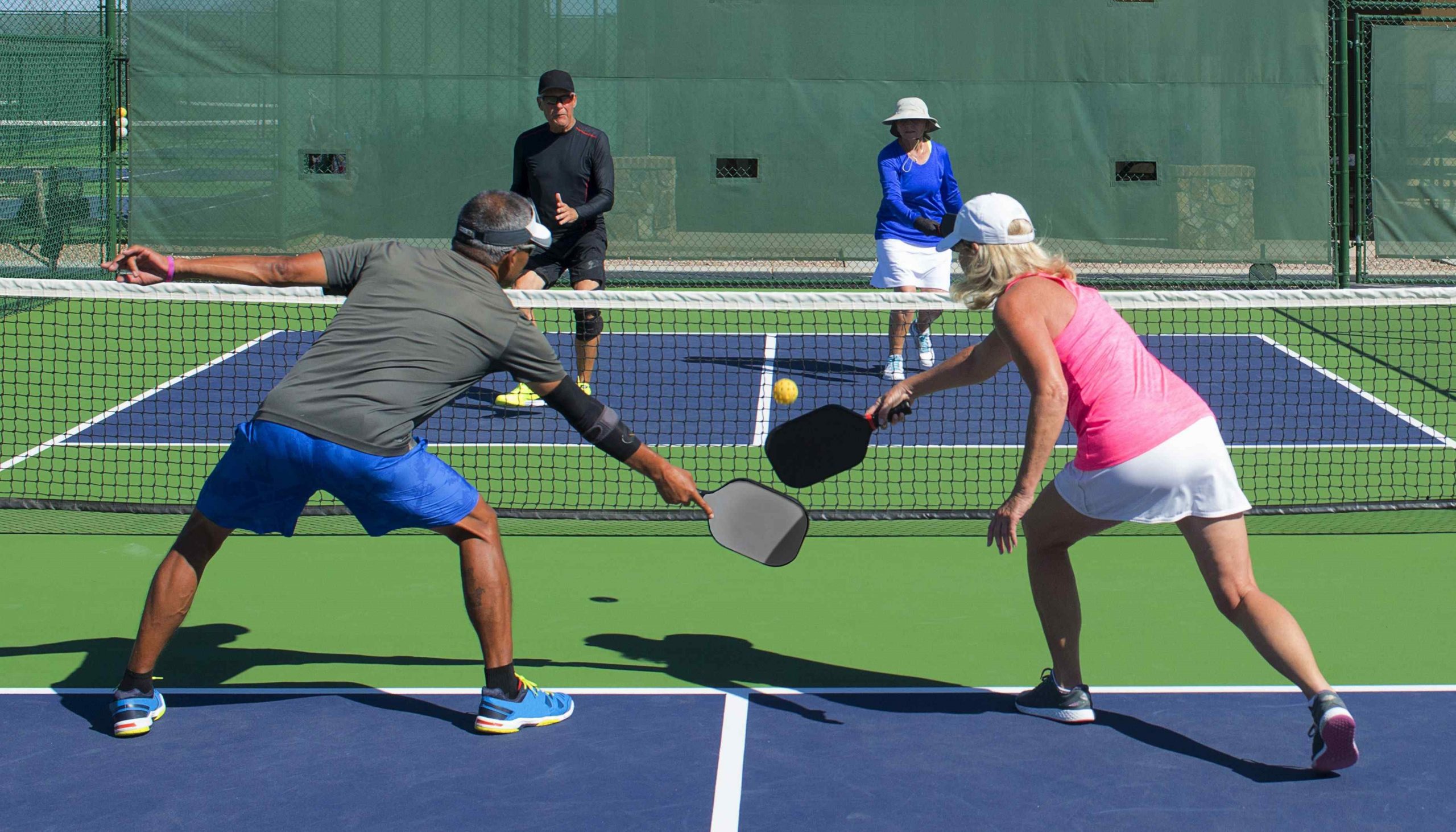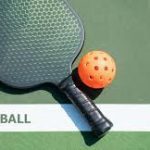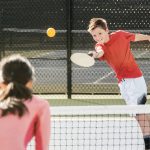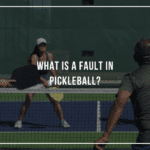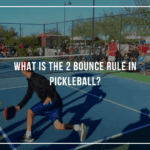Pickleball Terms and what they mean
Like any sport, there are Pickleball terms that you should know so you can converse on the court.
Phrases like Dink and Banger have specific meanings in Pickleball but an outsider may question what you are talking about!
For your convenience, we have listed most of the terms that you will find on a Pickleball court.
Learn them all and start talking like a pro!
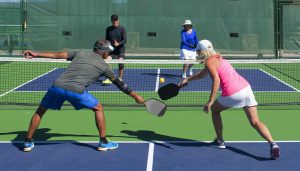
Here are some Pickleball terms you need to know…
Around the post shot
This is the shot where your shot goes around the net post and not over the net as it normally should. However, when the ball lands on your opponent’s court, they will find it hard to hit it. It is abbreviated as ATP in pickleball games and is quite a difficult shot to master.
Backhand
This is the shot where the player strikes the ball on the opposite side of their dominant forehand. The backhand shots can be very difficult to perform in the game, especially while running. Often a backhand shot is done with two hands.
Banger
A banger in pickleball is often a name for an aggressive player. They are the ones who like to hit back the ball with aggression and full power to their opponent to make it difficult for the opponent to hit back. Unlike other racquet sports, in pickleball, bangers aren’t the most skillful. It is what most beginner pickleball players do because they don’t know any better.
Baseline
The baselines are lined boundaries at the end of the court that run parallel to the net. The standard baseline in a pickleball court is generally around 22 feet away from the net. There are two baselines in a pickleball court, one on either side of the net, for the two teams.
Crosscourt
This is the court area that is placed directly opposite to your side of the court. Hitting a dink in the cross court stretches out the opponent’s defense and allows the players to indulge in a strategic win. Consistently hitting the ball diagonally to the opponent will, at one point, result in the opponent making a mistake and giving the players the loophole to hit back.
Dink
A dink is a soft shot that is hit from the non-volley zone that allows the ball to go over the net and then land on the opponent’s no-volley zone. A well-shot dink will arc in the downward direction, making it difficult for the opponent to hit back. It does take quite a lot of time to master the shot.
Double bounce rule
This rule is also known as the two bounce rule – please see below.
Drills
Pickleball drills are hand-eye coordination and posture movements that allow the players to improve their skills over time. There are several types of pickleball drills that the players can master over time. The most common pickleball drills include:
- Sweet spot – allows the players to improve their hand-eye coordination.
- Cross-court dinks – improves the overall footwork and the body movement of the pickleball players.
- Volley battle – improves the hand-eye coordination and the speed of the players.
- Transition after serving – allows the player to be quick on their feet, moving faster from their place of service to the back of the court to continue the game.
Drop shot
The drop shot is another soft shot that is hit following the bounce from deep inside the court. The shot should land in the opponent’s no volley zone, ideally closer to the net. It is regarded as the main 3rd shot and is quite a difficult shot to master.
For this, the player has to stand close to the net and then hit the pickleball underhand in front of their body. It is mandatory for the ball to arc before it reaches right down on the opponent’s feet. It can land near the net or in the no-volley zone of the opponent.
Foot fault
Foot faults in pickleball are the situations where the foot crosses the boundaries and touches lines that it shouldn’t while the game is on. The service foot faults are the most common and can transfer the service from one team to their opponent.
According to service feet fault rules, once the server hits the pickleball, their leg should not:
- Touch the area outside the imaginary extension of the sideline in the court.
- Touch the area outside the centerline of the pickleball court.
- Be touching the baseline in the court too.
Faults can result in fouls and transfer the services from one team to their opponent. So, the player needs to be careful.
Grip
The pickleball grip is the leather-like wrap that is tied around the handle of the pickleball paddle. Not having a tightly bound grip can affect the way a player experiences the game. It also affects the overall efficiency of the player throughout the game. There are three different types of pickleball grips, including:
- Eastern pickleball grip
- Overgrip pickleball grip
- Continental pickleball grip
Knowing about the pros and cons of each grip helps the player choose the best choice for their game. Having the right grip reflects on the strength and efficiency of the shot.
Kitchen
The Kitchen is the non-volley zone that is prevalently seen on the pickleball court. It extends seven feet from both sides of the net, measuring from one sideline to the other. There are several rules of pickleball surrounding the kitchen. The most important of them all is that the players cannot step inside the kitchen or even touch the kitchen line while volleying the ball. Doing so will result in a foul in the game.
Let
A Let in Pickleball is when the serve directly hits the net but then it lands in the correct service area of your opponent. If the ball lands outside the correct service area of your opponent then it is a fault.
Non-volley zone
Also known as the kitchen, the non-volley zone is the area that covers 7 feet of distance on either side of the net. Volleying in this region of the court is prohibited. The volleys may hit past the standard non-volley line in the pickleball court. Also, the ball has to bounce once beyond the non-volley zone before the players can hit it back to their opponent on the other side.
Oh no!
Oh No! in pickleball is a moment that the serving team gains a point and the opponent loses one. This is often said in a moment when the ball is hit by the server to their opponent and the players think that the other will hit it but end up losing the hit. This is a very common issue with doubles tournaments in pickleball.
Out of bounds
An out of bounds shot happens when the serving team hits the ball outside of their opponent’s baseline, sideline or centreline.
Rally
Rally is another name for continuous play that happens just after the serve and then before the fault. It involves the string of shots that are exchanged between both teams during the time frame. This can continue until a fault or foul happens and one side loses their service and has to give it up to their opponent.
Receiver
The receiver is the player on the opponent team of the serving team. They are the ones the ball is served too. In pickleball, only the serving team scores a point. So, a receiver typically can’t gain a point unless they can flip the shots and end up getting the serving abilities for themselves from their opponent.
Server number
The server number in pickleball is designated as one or two. It applies to the current service only. Server 1 is the player who is on the right side of the court when the serve comes back to them. However, the first server is for that particular shot and will change in the next shot again.
Sideline
These are the boundary lines in the pickleball court that are perpendicular to the net. It is present on either side of the court. The net height is 36 inches high around the sidelines in the pickleball court.
Spin
Spin is an extremely crucial shot in pickleball. It allows the players to have an upper hand over their opponent with an extra skillful shot that is often quite difficult to master along the way. There are three types of spin in pickleball, including:
- Top spin – the pickleball rotates forward during the serve to the opponent
- Back spin – also known as underspin; the pickleball rotates backward.
- Side spin – the pickleball rotates around a vertical axis before reaching the opponent.
Mastering all these spins requires a lot of practice over time, especially to refine the individual shots.
Two bounce rule
According to the two-bounce rule, it is mandatory for the opponent team to let the ball bounce once in their court before returning it. Similarly, the returned shot should bounce once before the serving team can hit it back to the other team.
Underhand
Underhand in pickleball is when the player hits the ball below the waist. The players need to swing the ball in the air from low to high and then hit the ball upwards in an arcing motion to score a point from the opponent.
Volley
Volley is when the pickleball player hits the ball out of the air before it even bounces. These kinds of hits are commonly hit around the no-volley zone or from the transition area when working from the baseline to the no-volley zone in the court.
Volley llama
Volley llama is a leading brand that sells everything related to pickleball and more. From paddles to the pickleball gear, they keep track of just about anything that a player needs to prepare themselves for the big games and tournaments. They specialize in high-quality pickleball paddles that are USAPA approved, so players can use them for playing in national tournaments.
On a final note…start using these Pickleball terms and you’ll be talking like a pro in no time!

